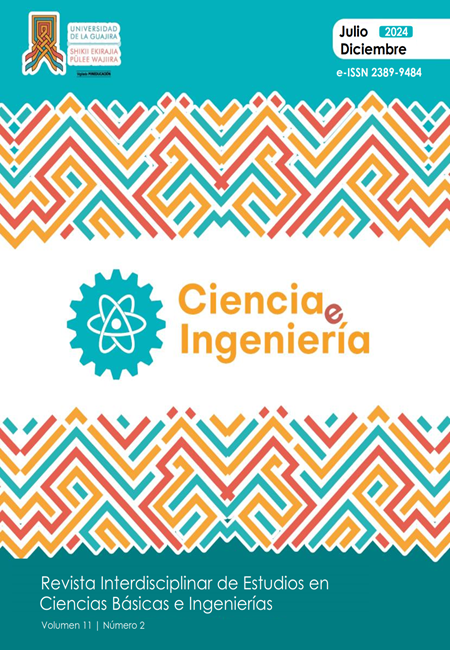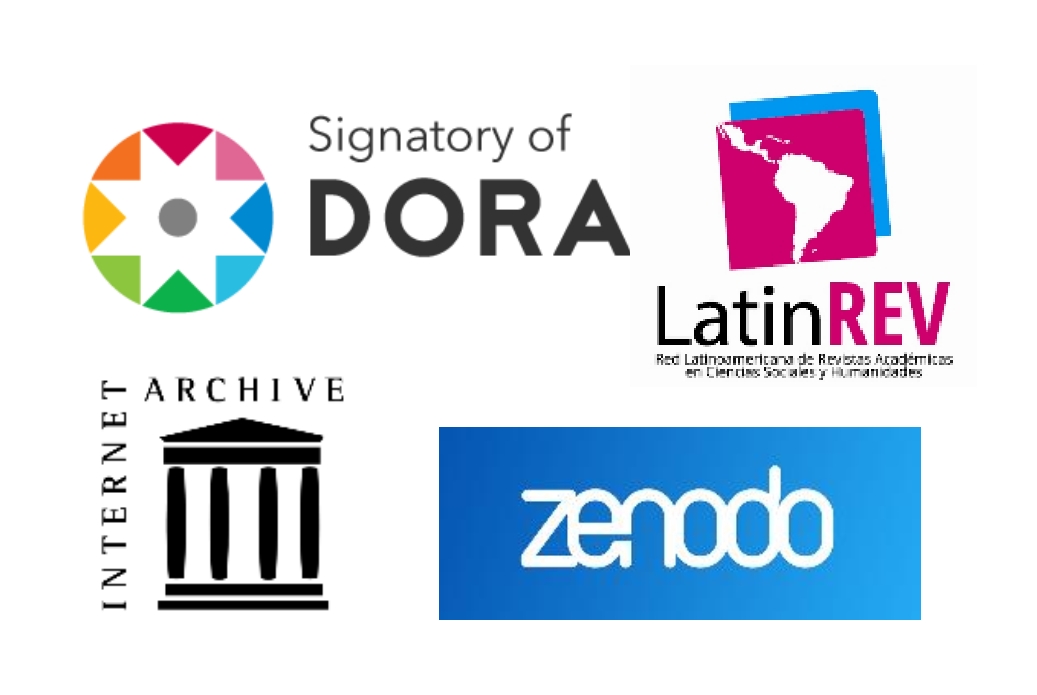Evaluation of the use of Trichoderma sp. and mountain microorganisms as biostimulants for the growth of Phaseolus sp.
DOI:
https://doi.org/10.5281/zenodo.12809589Keywords:
biostimulants, mountain microorganisms, Phaseolus sp., Trichoderma sp., BeansAbstract
Evaluating the growth of the bean species Phaseolus sp. using biostimulants is essential due to the increasing demand for sustainable agricultural methods. This study presents the results of evaluating the effect of Trichoderma sp., mountain microorganisms, and a combination of both on the growth of Phaseolus sp. The results indicated that the combination of Trichoderma sp. and mountain microorganisms was the most effective treatment, with an average height of 28 cm and 90 out of 144 seeds germinated. The treatment with mountain microorganisms showed an average growth of 26.5 cm and 78 germinated seeds, while the treatment with Trichoderma sp. reached 21 cm in height and 61 germinated seeds. The control, although showing an average growth of 25.5 cm and 68 germinated seeds, presented fungal contamination, which could compromise the long-term viability of the seedlings. In conclusion, the use of biofertilizers, especially the combination of Trichoderma sp. and mountain microorganisms, is a promising alternative for improving the growth of Phaseolus sp. These treatments not only promote robust and healthy growth but also offer advantages in terms of agricultural sustainability.
Downloads
References
Alori, E. T., Glick, B. R. & Babalola, O. O. (2017). Microbial phosphorus solubilization and its potential for use in sustainable agriculture. Frontiers in Microbiology, 8, 971. https://doi.org/10.3389/fmicb.2017.00971
Atlas, R. M. & Bartha, R. (1998). Microbial Ecology. Fundamentals and applications. Editorial Benjamin / Cummings Publishing Company, Inc., Menlo Park, California, U.S.A.
Backer, R., Rokem, J. S., Ilangumaran, G., Lamont, J., Praslickova, D., Ricci, E., Subramanian, S. & Smith, D. L. (2018). Plant growth-promoting rhizobacteria: context, mechanisms of action, and roadmap to commercialization of biostimulants for sustainable agriculture. Frontiers in Plant Science, 9, 1473. https://doi.org/10.3389/fpls.2018.01473
Bashan, Y., de-Bashan, L. E., Prabhu, S. R. & Hernandez, J. P. (2014). Advances in plant growth-promoting bacterial inoculant technology: formulations and practical perspectives (1998-2013). Plant and Soil, 378(1-2), 1-33. https://doi.org/10.1007/s11104-013-1956-x
Behie, S. W. & Bidochka, M. J. (2014). Nutrient transfer in plant–fungal symbioses. Trends in Plant Science, 19(11), 734-740. https://doi.org/10.1016/j.tplants.2014.06.007
Bona, E., Todeschini, V., Cantamessa, S., Cesaro, P., Copetta, A., Lingua, G., Gamalero, E., Berta, G. & Massa, N. (2018). Combined bacterial and mycorrhizal inocula improve tomato quality at reduced fertilization, Scientia Horticulturae 234:160-165. https://doi.org/10.1016/j.scienta.2018.02.026
Brotman, Y., Landau, U., Cuadros-Inostroza, Á., Takayuki, T., Fernie, A. R., Chet, I. (2013). Trichoderma-plant root colonization: escaping early plant defense responses and activation of the antioxidant machinery for saline stress tolerance. PLOS Pathogens 9(4): https://doi.org/10.1371/annotation/8b818c15-3fe0-4e56-9be2-e44fd1ed3fae
Callejas, R., Rojo, E., Benavidez, C. & Kania, E. (2012). Crecimiento y distribución de raíces y su relación con el potencial productivo de parrales de vides de mesa. Agrociencia, 46(1), 23- 35 http://www.scielo.org.mx/scielo.php?script=sci_arttext&pid=S1405-31952012000100003&lng=es&nrm=iso
Calvo, P., Nelson, L. & Kloepper, J. W. (2014). Usos agrícolas de bioestimulantes de plantas. Plant and Soil, 383(1-2), 3-41. https://doi.org/10.1007/s11104-014-2131-8
Campos, E. V. R., Proença, P. L. F., Oliveira, J. L., Bakshi, M., Abhilash, P. C. & Fraceto, L. F. (2019). Uso de insecticidas botánicos para la agricultura sostenible: Perspectivas futuras. Ecological Indicators, 105, 483-495. https://doi.org/10.1016/j.ecolind.2018.04.038
Cappuccino, J. G. & Sherman, N. (2014). Microbiology: A Laboratory Manual. Pearson.
Cargua, J. E., Orellana, G. L., Cuenca, A. del C.& Cedeño, G. A. (2019). Eficacia de bioestimulantes sobre el crecimiento inicial de plantas de fréjol común (Phaseolus vulgaris L.).10 (1):14-22. https://revistasespam.espam.edu.ec/index.php/Revista_ESPAMCIENCIA/article/view/184/179
Castro-Barquero, L., Martínez Vargas, V., Castro Zúñiga, O & Blanco Meneses, M. (2020). Abono orgánico, microorganismos de montaña (MM) y fertibiol para el control biológico de la hernia de las crucíferas (Plasmodiophora brassicae wor.) en el cultivo de mostaza china (Brassica rapa sp. pekinensis var. Taranko F1). Agronomía Costarricense, 44(2). https://doi.org/10.15517/rac.v44i2.43088
Colla, G., Hoagland, L., Ruzzi, M., Cardarelli, M., Bonini, P., Canaguier, R. & Rouphael Y. (2017). Biostimulant Action of Protein Hydrolysates: Unraveling Their Effects on Plant Physiology and Microbiome. Front Plant Sci. 22(8):2202. https://doi.org/10.3389/fpls.2017.02202
Contreras-Cornejo, H. A., Macías-Rodríguez, L., Alfaro-Cuevas, R. & López-Bucio, J. (2014). Trichoderma spp. Improve growth of Arabidopsis seedlings under salt stress through enhanced root development, osmolite production, and Na⁺ elimination through root exudates. Mol Plant Microbe Interact, 27(6):503-514. https://doi:10.1094/MPMI-09-13-0265-R
Döbereiner, J. A. (1997). Importância da fixação biológica de nitrogênio para a agricultura sustentável. Biotecnologia Ciência & Desenvolvimento, 1(1), 2-3.
Du Jardin, P. (2015). Plant biostimulants: Definition, concept, main categories and regulation. Scientia Horticulturae, 196, 3-14. https://doi.org/10.1016/j.scienta.2015.09.021
Frac, M., Hannula, S. E., Belka, M. & Jędryczka, M. (2018). Fungal biodiversity and their role in soil health. Frontiers in Microbiology. https://doi.org/10.3389/fmicb.2018.00707
Gams, W. & Bissett, J. (1998). Morphology and identification of Trichoderma. In: Trichoderma and Gliocladium (1998) Kuricek, C. & Harman, G. E. Editores. (pp. 3-34). CRC Press.
Gouda, S., Kerry, R. G., Das, G., Paramithiotis, S., Shin, H. S. & Patra, J. K. (2018). Revitalization of plant growth promoting rhizobacteria for sustainable development in agriculture. Microbiological Research, 206, 131-140. https://doi.org/10.1016/j.micres.2017.08.016
Hardoim, P. R., van Overbeek, L. S., Berg, G, Pirttilä, A. M., Compant, S., Campisano, A., Döring, M. & Sessitsch, A. (2015). The hidden world within plants: ecological and evolutionary considerations for defining functioning of microbial endophytes. Microbiology and Molecular Biology Reviews, 79(3), 293-320. https://doi.org/10.1128/mmbr.00050-14
Harman, G. E. (2000). Myths and dogmas of biocontrol: changes in perceptions derived from research on Trichoderma harzianum T-22. Plant Disease, 84(4), 377-393. https://doi.org/10.1094/PDIS.2000.84.4.377
Harman, G. E. (2006). Overview of mechanisms and uses of Trichoderma spp. Phytopathology, 96(2), 190-194. https://doi.org/10.1094/PHYTO-96-0190
Harman, G. E., Howell, C. R., Viterbo, A., Chet, I., & Lorito, M. (2004). Trichoderma species—opportunistic, avirulent plant symbionts. Nature Reviews Microbiology, 2(1), 43-56. https://doi.org/10.1038/nrmicro797.
Harman, G. E. (2011). Multifunctional fungal plant symbionts: new tools to enhance plant growth and productivity. New Phytol, 189(3), 647-649. https://doi.org/10.1111/j.1469-8137.2010.03614.x
López-Bucio, J., Pelagio-Flores, R., & Herrera-Estrella, A. (2015). Trichoderma as biostimulant: exploiting the multilevel properties of a plant beneficial fungus. Scientia Horticulturae, 196, 109-123. https://doi.org/10.1016/j.scienta.2015.08.043
Medina-Flores, C. M., Talavera-Loza, J. A., Rostrán-Molina, J. L. & Bárcenas-Lanzas, M. J. (2014). Efecto de dosis y aplicaciones edáficas y foliar de microorganismos de montaña con y sin sales minerales en el rendimiento del cacao (Theobroma cacao L.) variedad criolla. Nicaragua: Universidad Nacional Autónoma de Nicaragua. http://hdl.handle.net/123456789/4300
Muñoz-Díaz, A. J. (2020). Ventajas de los biopreparados para controlar enfermedades, como alternativa de la agricultura orgánica. Babahoyo: Universidad Técnica de Babahoyo. http://dspace.utb.edu.ec/handle/49000/8511
Muñoz Quintana, M., Alcívar Torres, L., Ruiz Parrales, Y., Álvarez Contreras, C. & Vásquez Contreras, S. (2024). Efecto de la aplicación de ácido giberélico, microorganismos nativos, Trichoderma sp. y melaza en el cultivo de banano (Musa x paradisiaca L). Conocimiento Global, 9(2), 270-287. https://conocimientoglobal.org/revista/index.php/cglobal/article/view/414
Noda, Y. (2009). Las micorrizas: Una alternativa de fertilización ecológica en los pastos. Pastos y Forrajes, 32(2). http://scielo.sld.cu/scielo.php?script=sci_arttext&pid=S0864-03942009000200001&lng=es&tlng=es
Pieterse, C. M., Zamioudis, C., Berendsen, R. L., Weller, D. M., Van Wees, S. C., & Bakker, P. A. (2014). Induced systemic resistance by beneficial microbes. Annual Review of Phytopathology, 52, 347-375. https://doi.org/10.1146/annurev-phyto-082712-102340
Pii, Y., Mimmo, T., Tomasi, N., Terzano, R., Cesco, S. & Crecchio C. (2015). Microbial interactions in the rhizosphere: beneficial influences of plant growth-promoting rhizobacteria on nutrient acquisition process. A review. Biol Fertil Soils, 51(4), 403-415. https://doi.org/10.1007/s00374-015-0996-1
Raaijmakers, J. M., Paulitz, T. C., Steinberg, C., Alabouvette, C. & Moënne-Loccoz, Y. (2009). The rhizosphere: a playground and battlefield for soilborne pathogens and beneficial microorganisms. Plant and Soil, 321(1), 341-361. https://doi.org/10.1007/s11104-008-9568-6
Rillig, M. C., Aguilar‐Trigueros, C. A., Bergmann, J., Verbruggen, E., Veresoglou, S. D., & Lehmann, A. (2015). Plant root and mycorrhizal fungal traits for understanding soil aggregation. New Phytologist, 205(4), 1385-1388. https://doi.org/10.1111/nph.13045
Rodríguez, E., Lorenzo, E., De Gracia, R., González, G. y González, F. (1997). Manual técnico del manejo integrado del frijol común o poroto (Phaseolus vulgaris L.) en el sistema de mínima labranza de Panamá. IDIAP. pp 75.
Rouphael, Y., & Colla, G. (2020). Editorial: Biostimulants in agriculture. Frontiers in Plant Science, 11, 40. https://doi.org/10.3389/fpls.2020.00040
Rouphael, Y., Spíchal, L., Panzarová, K., Casa, R., & Colla, G. (2018). High-throughput plant phenotyping for developing novel biostimulants: from lab to field or from field to lab? Frontiers in Plant Science, 9, 1197. https://doi.org/10.3389/fpls.2018.01197
Torres-Pérez, J. C., Aguilar Jiménez, C. E., Vázquez Solís, H., Solís López, M., Gómez Padilla, E. & Aguilar Jiménez, J. R. (2022). Evaluación del uso de microorganismos de montaña activados en el cultivo de rosas, Zinacantán, Chiapas, México. Siembra, 9(1), e3500. https://doi.org/10.29166/siembra.v9i1.3500
Yakhin, O. I., Lubyanov, A. A., Yakhin, I. A., & Brown, P. H. (2017). Biostimulants in plant science: a global perspective. Frontiers in Plant Science, 7, 2049. https://doi.org/10.3389/fpls.2016.02049
Published
How to Cite
Issue
Section
License

This work is licensed under a Creative Commons Attribution-NonCommercial-NoDerivatives 4.0 International License.





